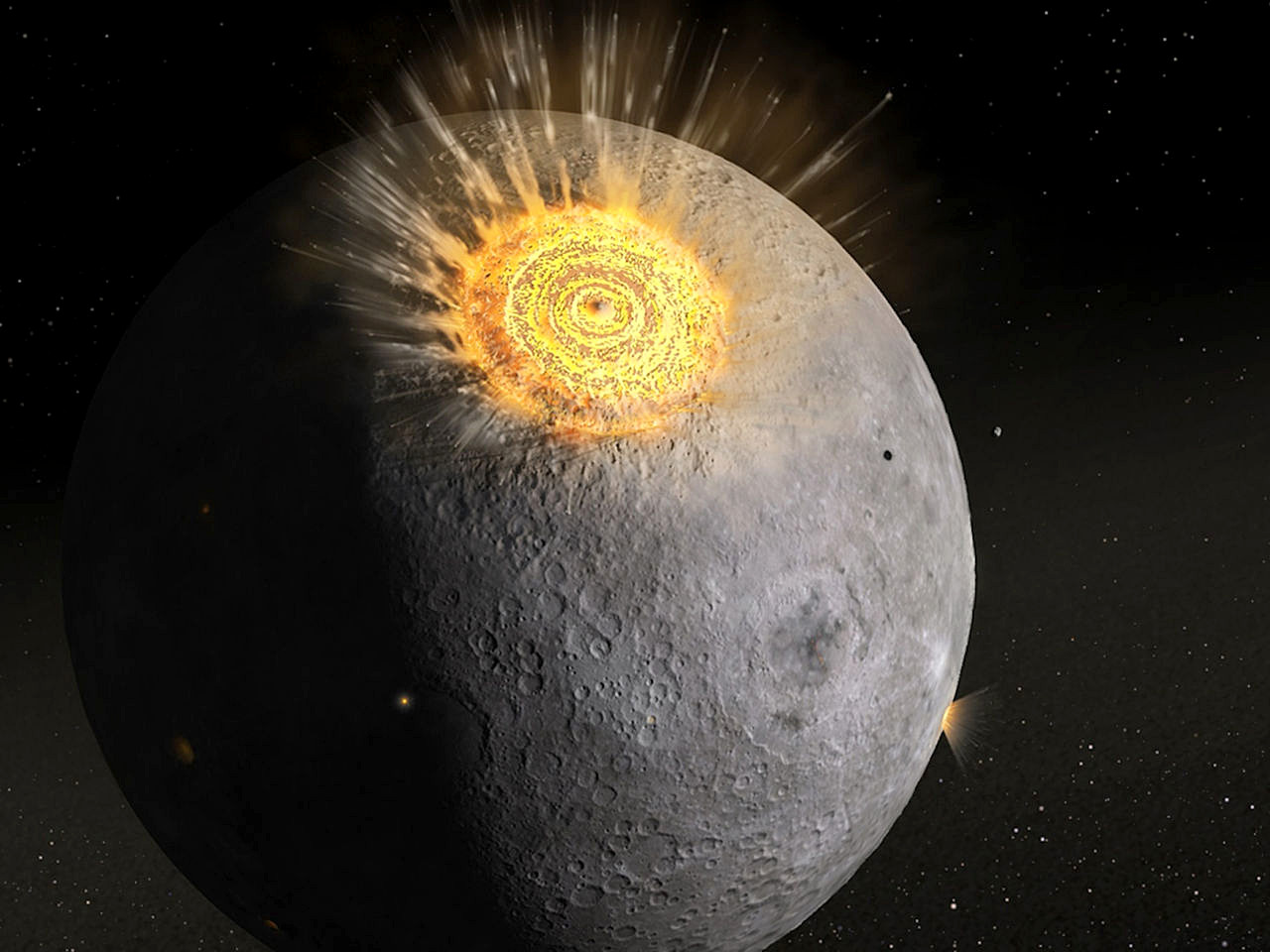
In the current study published in Nature Communications, an international science team compared the chemical and isotopic composition of lunar volatiles (including water) with those of volatile materials in comets and meteoritic samples of asteroids. They then calculated the proportion of water that could have been delivered by those two populations of objects. Their results indicate that most (>80%) of the water in the lunar interior was derived from asteroids that are similar to carbonaceous chondritic meteorites. That water was delivered when the Moon was still surrounded by a magma ocean and before a massive crust (now seen as the bright white highlands of the Moon) prevented impacting objects from delivering significant amounts of material to the lunar interior. A similar delivery of water to the Earth would have been occurring within this same interval of time.
These results were derived by an interdisciplinary team with extensive experience studying both the Moon and meteoritic samples of impacting asteroids. The first author on the paper is Dr. Jessica J. Barnes (a postdoctoral researcher at The Open University, Milton Keynes, U.K.). Her co-authors are Dr. David A. Kring (Senior Scientist in the Center for Lunar Science and Exploration (CLSE), Lunar and Planetary Institute, Houston, Texas), Dr. Romain Tartèse (a postdoctoral researcher at the Muséum National d’Histoire Naturelle, Paris, France), Dr. Ian A. Franchi (Senior Research Fellow, The Open University, Milton Keynes, U.K.), Prof. Mahesh Anand (Reader/Associate Professor, The Open University, Milton Keynes, U.K.), and Prof. Sara S. Russell (Head, Division of Mineral and Planetary Sciences, The Natural History Museum, London, U.K.).
The first author, Dr. Barnes, is a former graduate student intern in the CLSE Lunar Exploration Summer Intern Program, is currently a CLSE postdoctoral international partner, and is an incoming postdoctoral researcher at the NASA Johnson Space Center and the Lunar and Planetary Institute, which is managed by USRA for NASA.
Dr. Kring’s portion of the work was supported at the Lunar and Planetary Institute by cooperative agreements to the Universities Space Research Association from NASA’s Planetary Science Division and NASA’s solar system Exploration Research Virtual Institute.



